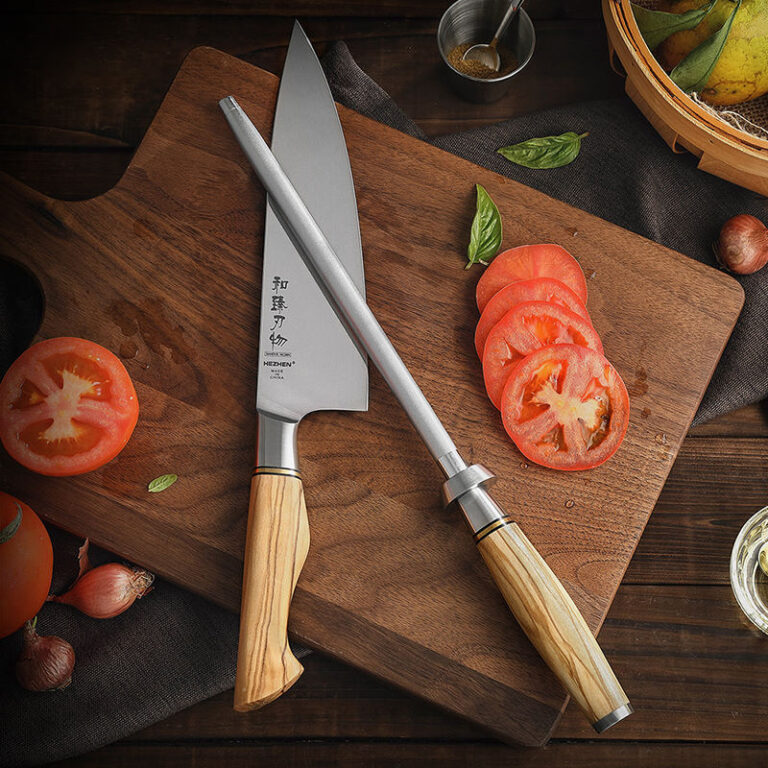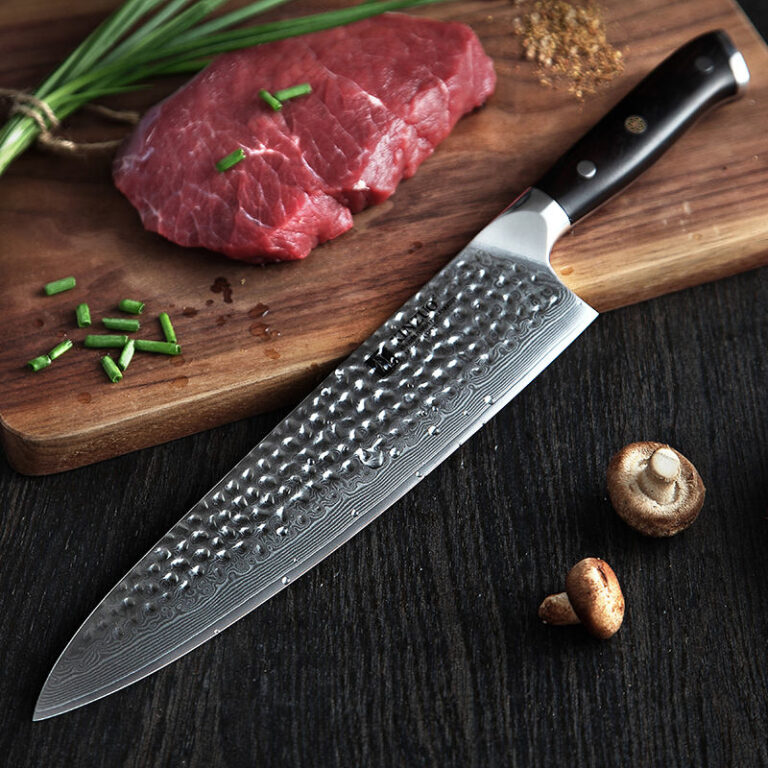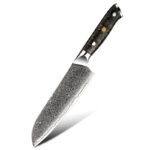- How I Clean My Damascus Steel Knife
As a knife enthusiast, I have a special appreciation for Damascus steel knives. These knives are not only visually stunning but also sharp and durable. However, they require special care to maintain their optimal condition. Today, I’ll share how I clean and maintain my Damascus steel knife.
- Clean Immediately to Prevent Rust
After every use, I make sure to clean my knife right away, especially after cutting acidic foods (like lemons and tomatoes) or using it in a humid environment. Damascus steel is prone to rust, so I never leave water spots or food residue on the blade for too long.
Here’s my cleaning process:
- I rinse the blade with warm water to remove surface stains and food particles.
- Using a soft sponge or cloth with mild dish soap, I gently wipe along the blade’s direction. I avoid using steel wool or rough brushes to prevent scratching the intricate patterns.
- I rinse thoroughly to remove any soap residue.
- Dry Thoroughly to Avoid Water Spots
Moisture is the biggest enemy of Damascus steel. Even the smallest water spots can lead to rust over time. That’s why I always dry my knife immediately after washing.
- I use a soft towel or lint-free cloth to wipe the blade completely.
- I pay extra attention to the area where the blade meets the handle, as it tends to trap moisture.
- Sometimes, I use a hairdryer (on a low heat setting) to ensure every part of the knife is completely dry.
- Removing Light Rust (If Needed)
Despite my careful maintenance, small rust spots sometimes appear. In such cases, I follow these steps:
- I gently rub the rust spots with a soft cloth soaked in white vinegar or baking soda paste.
- For stubborn rust, I use a soft-bristled toothbrush or eraser to lightly scrub the area.
- After treatment, I rinse the blade with warm water and dry it thoroughly.
- Apply Protective Oil to Prolong Lifespan
To keep the blade in top condition, I regularly apply a thin layer of protective oil, especially if I won’t be using the knife for a while.
- I prefer food-grade mineral oil, as it’s safe and won’t affect the taste of food.
- I use a soft cloth to apply a small amount of oil evenly over the blade.
- After letting it sit for a while, I wipe off any excess oil to prevent a greasy feel.
- Proper Storage to Avoid Damage
After cleaning and maintenance, proper storage is crucial. Here’s how I store my knife:
- I never toss my Damascus steel knife into a regular drawer to avoid damage from impact.
- I use a knife block, magnetic knife strip, or knife sheath to keep the blade protected.
- I store it in a dry, well-ventilated place, away from moisture.
Summary
Damascus steel knives are both beautiful and functional, but they require careful maintenance. By cleaning, drying, oiling, and storing my knife properly after each use, I ensure that the blade remains sharp and its patterns stay intact. If you love Damascus steel knives as much as I do, try these methods to keep your knife in top condition!





